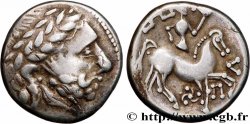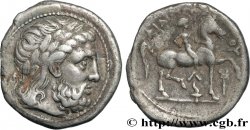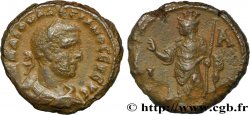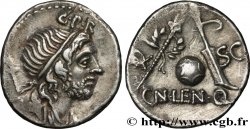Live auction - bgr_609217 - DANUBIAN CELTS - TETRADRACHMS IMITATIONS OF PHILIP II AND HIS SUCCESSORS Tétradrachme au cavalier, imitation de Philippe II
Чтобы принять участие в торгах, вы должны войти в систему и стать подтвержденным участником аукциона. Войдите, чтобы сделать ставку. Ваш аккаунт будет подтвержден в течение 48 часов. Не ждите до закрытия торгов, чтобы зарегистрироваться.Сделав ставку на данный товар, вы вступаете в юридическое соглашение на покупку выбранного товара и нажатием кнопки «Сделать ставку» подтверждаете принятие вами условий интернет-аукционов cgb.fr.
Ставка может бить сделана только в полном эквиваленте евро. Торги закроются согласно времени, указанному в описании товара, все ставки, сделанные после закрытия торгов, учитываться не будут. Не следует откладывать предложение вашей ставки до последнего момента, так как система может не успеть обработать вашу заявку, и ваша ставка не будет принята. Более детальную информацию вы найдёте здесь: FAQ по интернет-аукционам.
Все ставки победителей подлежат комиссии 18%.
Все ставки победителей подлежат комиссии 18%.
| Оценить : | 600 € |
| Цена : | 300 € |
| Максимальная предлагаемая цена : | 375 € |
| Конец торгов : | 28 July 2020 14:13:18 |
| Участников : | 1 Участников |
Тип Tétradrachme au cavalier, imitation de Philippe II
Дата: c. 320-280 AC.
Металл: silver
Диаметр: 24,5 mm
Ориентация осей монеты: 12 h.
Вес: 13,71 g.
Редкость: R2
Комментарии о состоянии
Monnaie sur un flan large et bien centré. Usure régulière. Joli portrait de Zeus avec une petite griffure sur la joue. Patine grise de collection
Ссылки в каталоге: :
Лицевая сторона
Аверс: легенда: ANÉPIGRAPHE.
Аверс: описание: Tête laurée de Zeus à droite ; grènetis.
Обратная сторона
Реверс: Описание: Cavalier au pas à droite, tenant une palme de la main droite ; le cheval lève l'antérieur à droite, encadrée d’une lettre, d’une torche de course et d’un dauphin ; au-dessus du cavalier, la légende.
Реверс: легенда: FILIP-.-U/ L
Реверс: перевод: (de Philippe).
Комментарий
Imitation de l’atelier d’Amphipolis avec le lambda et la torche de course sous le cheval au revers. Si le statère d'or de Philippe II de Macédoine a servi de prototype à de nombreuses imitations gauloises, le tétradrachme n'a pas été imité en Gaule, mais reste principal sujet d'inspiration des monnaies pour les Celtes du Danube (LT. 9697-9767, 9768-9832, 9618-9630, 9870-9886). Les premières imitations furent frappées dans le premier quart du IIIe siècle avant J.-C. La fabrication des copies serviles, puis des imitations, enfin des frappes celtiques continuèrent pendant plus de deux siècles.







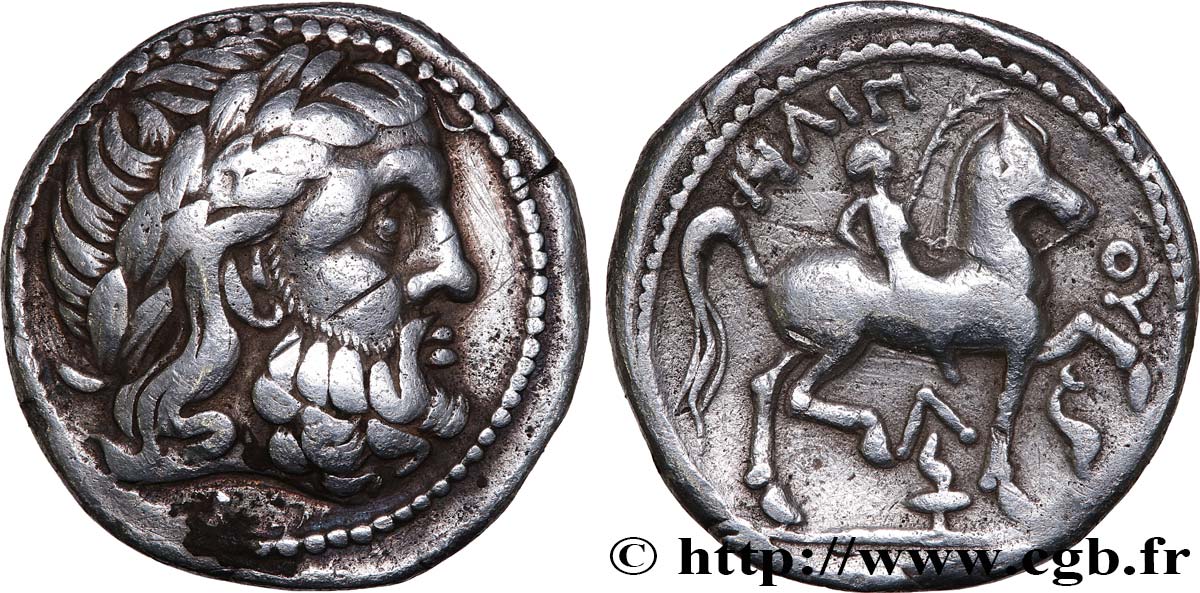
 Cообщить об ошибке
Cообщить об ошибке Распечатать страницу
Распечатать страницу Отправить мой выбор
Отправить мой выбор Задать вопрос
Задать вопрос Consign / sell
Consign / sell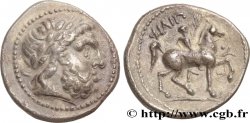
 Информация
Информация